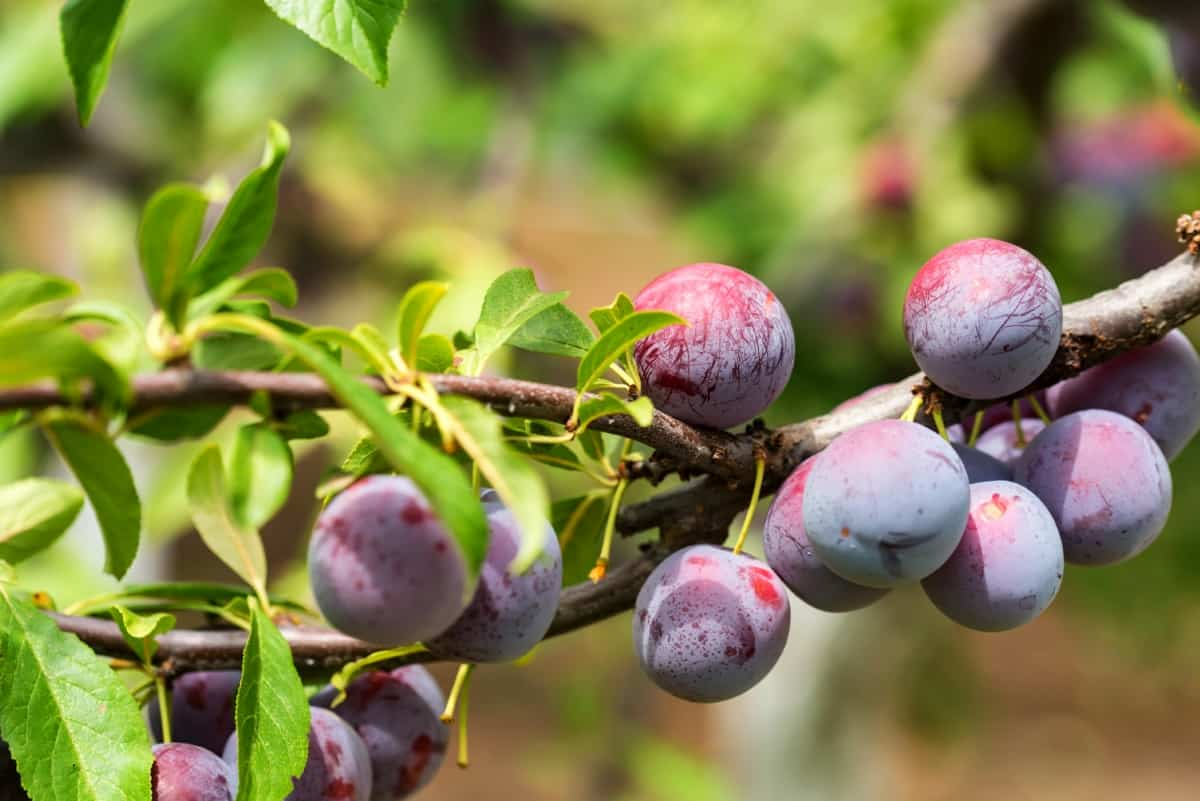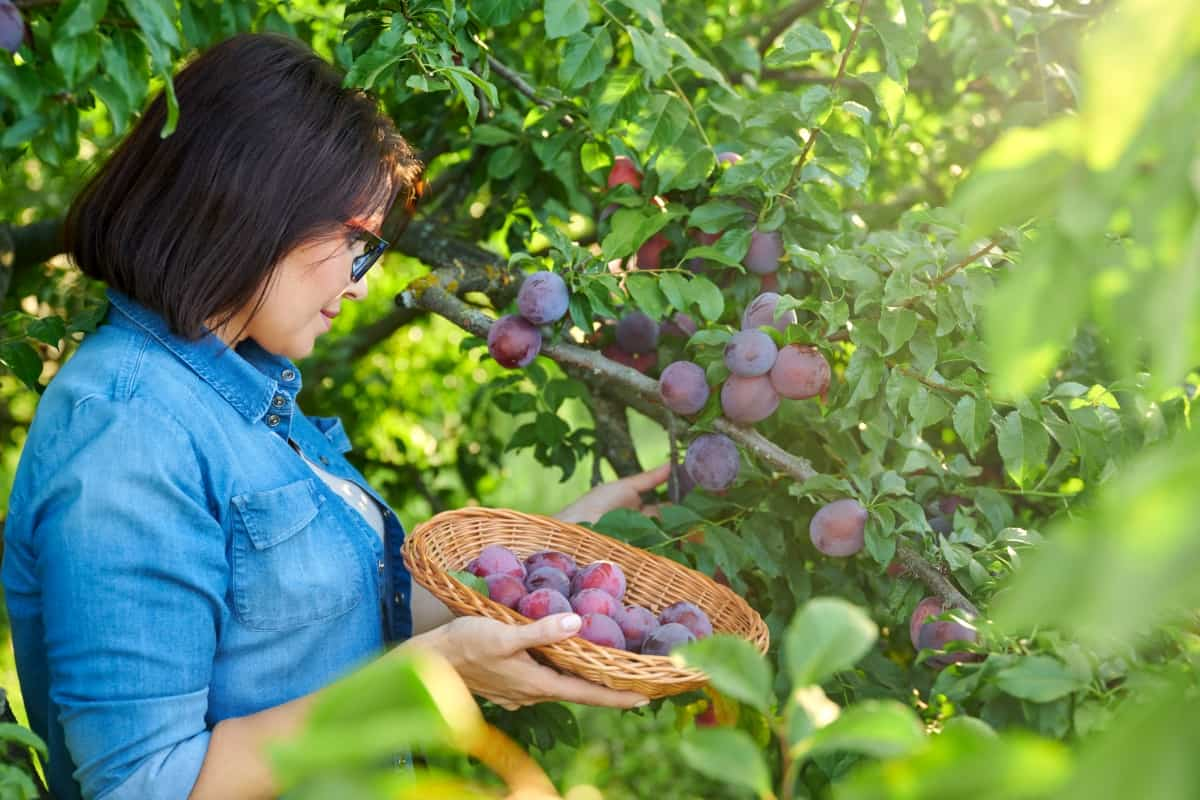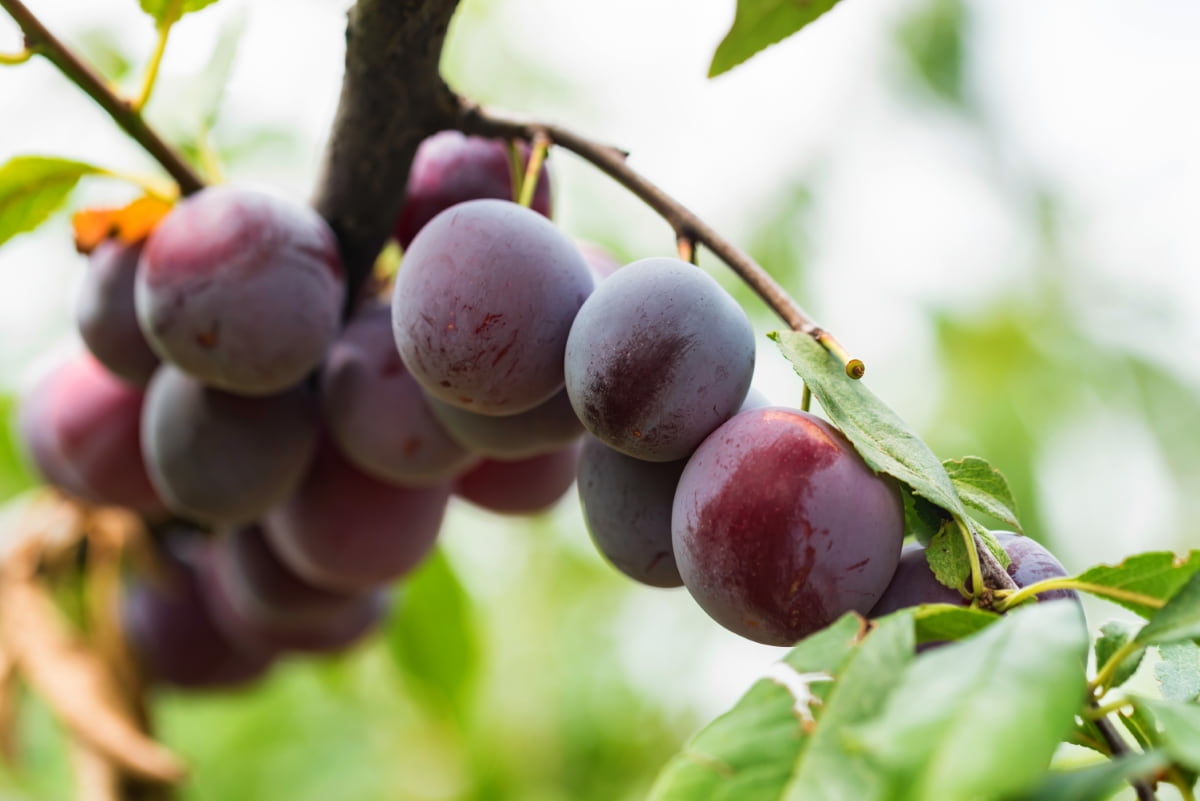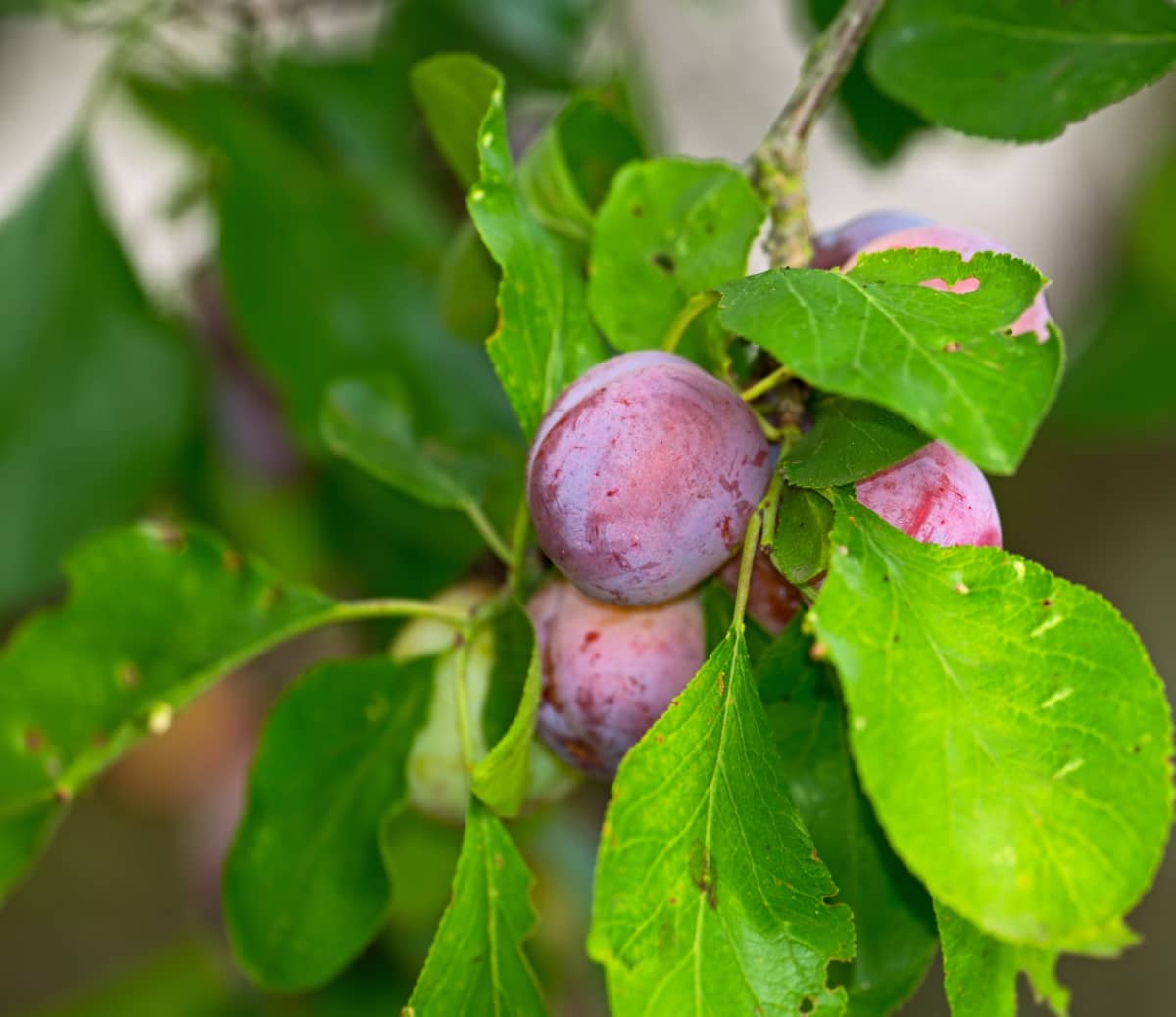Satsuma Plums are a delightful addition to any garden, with their sweet and juicy fruit that can be used in a variety of culinary creations. By understanding the origins and characteristics of Satsuma Plums, as well as learning how to properly care for and prune them, you can ensure a bountiful harvest year after year. With these Japanese Plum Growing Tips, your Satsuma Plum tree will impress family and friends alike.

Growing Satsuma Plum
Introduction to Satsuma Plums
Overview of Satsuma Plums
Satsuma Plums, also known as Blood Plums or Red Plums, are delicious and vibrant fruits. These Plums are prized for their sweet flavor and deep red flesh, making them a favorite among many fruit lovers.
Origins and Characteristics
Originating from Japan, Satsuma Plums are known for their distinct deep red skin and tender flesh. These Plums thrive in warm climates and are prized for their early ripening, making them the best choice among home gardeners and commercial growers alike. With their high sugar content and refreshing taste, Satsuma Plums are perfect for eating fresh or using in various culinary creations.
Choosing the Right Location
Sunlight Requirements
When it comes to Sunlight Needs for Satsuma Plums, choosing the right location is key. Start by selecting a spot that gets full sunlight for at least 6-8 hours a day. Sunlight is crucial for the tree’s growth and fruit production.
Soil Type and Drainage
When it comes to Soil Requirements for Japanese Plums, they thrive in well-draining soil that is rich in organic matter. Consider testing your soil pH levels before planting to ensure it falls within the range of 5.5-6.5 for Satsuma Plums. If needed, amend the soil accordingly with compost or other organic materials to create a suitable environment for your tree to flourish.
Planting Satsuma Plums
Best Time to Plant
Planting these juicy fruits can be a rewarding experience. The ideal time is in late winter or early spring when the soil temperatures are mild.
Step-by-Step Planting Guide
When it comes to Planting Satsuma Plum, select a spot with well-drained soil for your Satsuma Plum tree. Dig a hole as wide as the root ball and slightly shallower than its depth. Place the tree in the center of the hole, ensuring that it sits at ground level once covered. Gently backfill the hole with soil, tamping down lightly as you go to remove any air pockets. Water frequently after planting to help settle the soil around the roots. Remember to provide adequate water during dry periods, especially in the first year after planting.
In case you missed it: Italian Plum Trees: A Comprehensive Guide for Varieties, Planting and Care

Watering and Mulching
Watering Schedule
Watering the Satsuma Plum tree is essential for its growth and fruit production. It’s important to establish a regular watering schedule, especially during the hot summer months when the tree needs more moisture. Aim to water deeply but infrequently to encourage deep root growth.
Benefits of Mulching
Mulching around the base of your Satsuma Plum tree can provide numerous benefits. Mulch suppresses weed growth and regulates soil temperature. Additionally, as mulch breaks down, it adds organic matter to the soil, which improves its overall health. Applying a layer of mulch around your Satsuma Plum tree will not only conserve moisture but also provide insulation for roots during extreme temperatures.
Fertilizing Your Satsuma Plum Tree
When and How to Fertilize
Fertilizing Japanese Plum is essential for its overall health and productivity. It’s recommended to fertilize your Satsuma Plum tree in early spring before new growth appears.
Recommended Fertilizers
Choose a balanced fertilizer specifically formulated for fruit trees, ensuring it contains essential nutrients like nitrogen, phosphorus, and potassium. Slow-release fertilizers are ideal as they provide consistent nourishment over time. When applying fertilizer, spread it around the drip line of the tree, avoiding direct contact with the trunk.
Pruning and Training
Pruning Techniques
Pruning and training your Satsuma Plum tree are essential for promoting optimal growth and fruit production. When it comes to Pruning Satsuma Plum Trees, start by removing dead or diseased branches to maintain the health of the tree. Additionally, thin out crowded areas to allow for better air circulation and sunlight penetration.
Training for Optimal Growth
Training your Satsuma Plum tree involves shaping its structure from a young age. Begin by guiding the main trunk upwards with stakes if needed. As the tree grows, prune lateral branches to encourage a strong framework that can support heavy fruit loads in the future. Regularly inspect your Satsuma Plum tree for any signs of overgrowth or crossing branches that may impede airflow within the canopy.
Pest and Disease Management
Common Pests and Diseases
When it comes to Pest Control for Satsuma Plums, keeping an eye out for pests and diseases is crucial for a thriving tree. Common pests that may target your Plum tree include aphids, scale insects, and caterpillars. These pesky invaders can cause damage to the leaves and fruit if left unchecked. In terms of diseases, keep an eye out for fungal infections such as brown rot or powdery mildew.
Organic Control Methods
When it comes to Satsuma Plum pests and Disease Management, consider using beneficial insects like ladybugs or lacewings that prey on aphids. Neem oil spray is effective in controlling various pests while being safe for the environment. Prune any affected branches promptly and avoid overhead watering to prevent spreading.
In case you missed it: Plum Gardening For Beginners, How to Start

Pollination Requirements
Importance of Cross-Pollination
When it comes to Satsuma Plum Pollination, understanding pollination is key. These trees rely on cross-pollination for fruit production, meaning they need pollen from a different variety of Plum trees to achieve optimal yield.
Suitable Pollinator Varieties
Choosing suitable pollinator Satsuma Plum Varieties is crucial in ensuring a successful harvest. Look for Plum tree varieties that bloom around the same time as your Satsuma Plum, such as Santa Rosa or Burbank. Bees are essential in transferring pollen between trees, so having a diverse selection of flowering plants in your garden can attract these pollinators. By carefully selecting compatible pollinator varieties and creating a bee-friendly environment, you can enhance the chances of abundant fruit set on your Satsuma Plum tree.
Harvesting Satsuma Plums
Signs of Maturity
When it comes to harvesting Satsuma Plums, timing is key. One sign of maturity to look out for is the fruit’s color – a deep orange hue indicates readiness. Another indicator is the firmness of the Plum; it should yield slightly when gently pressed. Avoid picking Plums that are too hard or soft, as they may not be fully ripe.
Harvesting Techniques
To harvest, simply twist the fruit upwards until it detaches from the tree easily. Be careful not to damage any surrounding branches or fruit during this process. Use pruning shears if necessary for harder-to-reach fruits, but handle with care.
Winter Care and Protection
Preparing for Winter
As winter approaches, it’s essential to prepare your Satsuma Plum tree for the cold months ahead. One crucial aspect of winter care is ensuring your tree is adequately protected from frost. Frost can damage the delicate blossoms and young fruit, impacting next year’s harvest.
Frost Protection Measures
Winter Protection for Satsuma Trees, consider wrapping the trunk with insulating material or using frost cloth to cover the entire canopy. Pruning your tree before winter sets in can also help minimize potential damage from snow or ice accumulation on branches. Removing dead or diseased wood will not only improve airflow but also reduce the risk of breakage under heavy snow loads.
In case you missed it: 18 Common Plum Tree Problems: How to Fix Them, Solutions, and Treatment

Conclusion
Growing Satsuma Plums can be a rewarding experience for any home gardener. Remember to give it the right care, from choosing the right location to pruning and protecting it during winter. With proper Satsuma Plum Tree Maintenance, you’ll soon enjoy the sweet taste of freshly harvested Satsuma Plums from your backyard orchard.
- Flower Garden Designs and Layouts for Beginners
- Planting and Spacing Techniques in Papaya: A Beginner’s Guide
- Growing Gold: Essential Techniques for Planting Pineapples
- How to Make Kalanchoe Plant Bushy: Home Remedies and Solutions
- 11 Reasons Why Your Gardenia is Not Blooming: Home Remedies and Solutions
- Eco Elegance: The Guide to Designing a Drought-Tolerant Landscape
- Gardening on a Slope: Strategies for Hillside Landscaping
- Nourish and Flourish: Top Organic Mulches for Thriving House Plants
- Everything You Want to Know about Indian Mogra Flower: Discover Uses and Growing